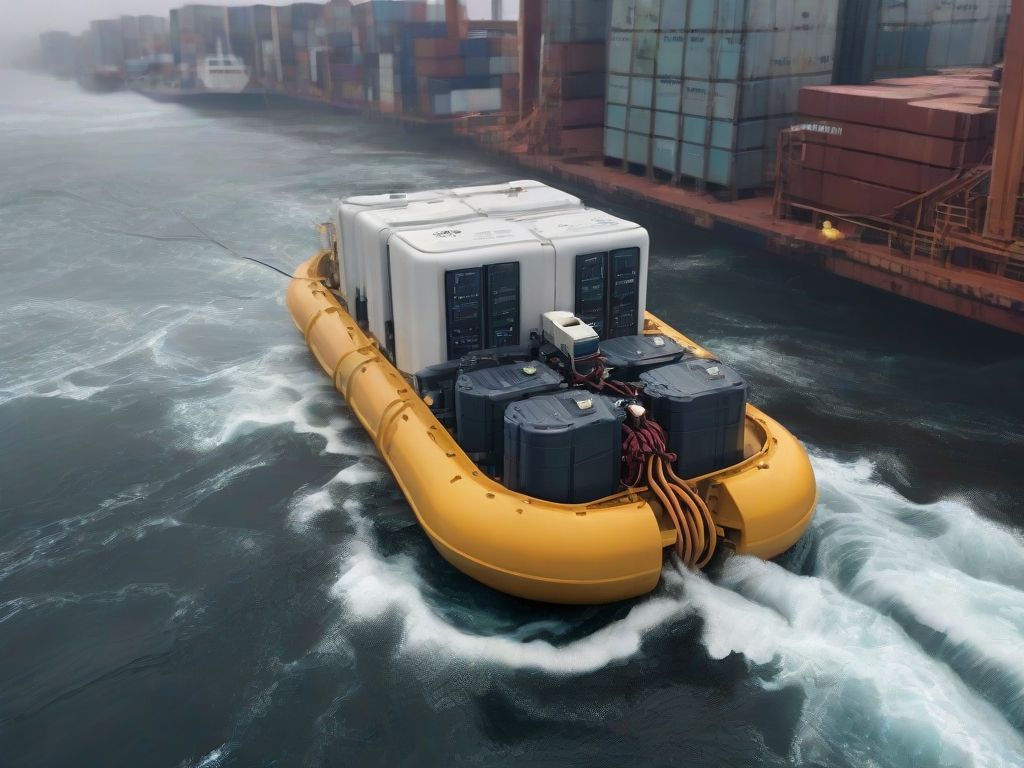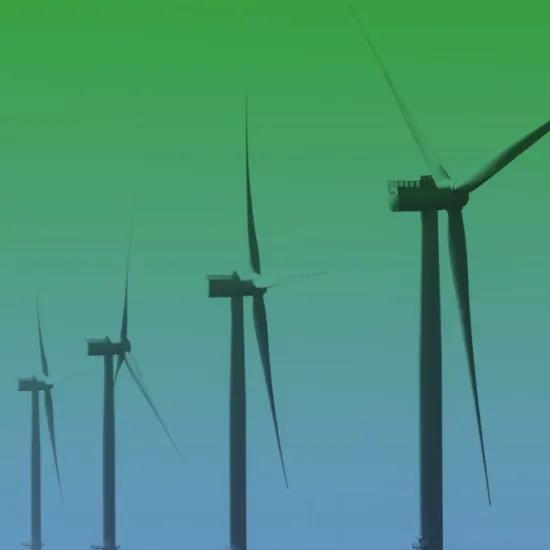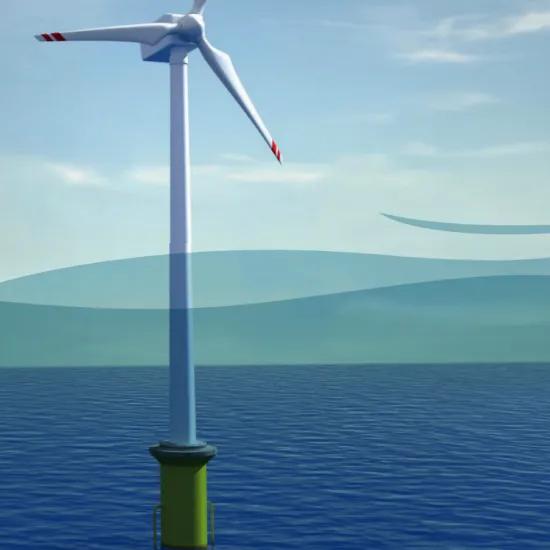Novel vessel charging concept boosts full-electric crew transfer vessel
In future, vessels used for transferring offshore crew will be electric and will need to charge offshore. With the infrastructure for turbine-mounted chargers not yet widely available, vessel-to-vessel charging offers a solution. Damen Shipyards Group has developed a new concept for offshore charging.
The transition to sustainable shipping requires the electrification of vessels and in offshore energy, offshore charging is an essential feature for a fully electric operation of crew transfer vessels (CTVs). Typically, this would be dependent on charging infrastructure being present at an offshore wind farm.
Installing a large battery system on board of a CTV is a challenge, given the weight and space restrictions. Installing the system in a much larger, less space-sensitive commissioning service operations vessel (CSOV) gives the smaller CTV access to the energy it requires without compromising on capabilities. CSOVs usually stay in an offshore wind farm for an extended period of up to 30 days, providing maintenance materials and housing technicians in hotel-like accommodation.
CSOV as charging host of full-electric CTV
As builders of both CTVs and CSOVs Damen Shipyards Group came to the idea of placing the charging scope within its own assets. The newly developed system envisages a fully electric CTV, which can charge at either an offshore wind turbine or a CSOV outfitted with a charger. This can be done with both a conventional, diesel-powered CSOV or with a fully electric version.
Using the CSOV as a charger host offers several advantages compared to a turbine:
- the stern of the CSOV is lower than a turbine, which provides the CTV with easier access to the charger.
- unlike the turbine, the CSOV is able to change its position, enabling the CTV to charge in the most sheltered position with regards to wave conditions.
Novel charging connector
With the charging system that Damen has applied to its concept the CTV would connect via a bell mouth, that catches the charger that is lowered from a reel on the aft deck of the CSOV. Following personnel disembarkation, the vessel could connect using an automated, safe process. It is expected that charging could take place in 2-3 hours, depending on the operational profile.
If fully electric, the host ship itself could tap directly into a wind turbine for charging its own batteries.
Ship taps directly into a wind turbine for charging its batteries
Energy transition in shipping sector
The new concept could give a boost to the maritime energy transition, by offering a way to dramatically reduce emissions during the operational phase of an offshore wind farm. The solution can make it possible for CTV operators to invest today, in preparation for the wider distribution of full-electric CSOVs in the future.
Not only the offshore sector, but also the inland shipping sector needs to become more sustainable through electrification. There too, not enough power supply is available today. With the 'Floating Battery' project, Sirris and VIL want to develop a flexible and sustainable solution for inland navigation. This by deploying battery containers for power supply during mooring and as charging infrastructure for battery-electric ships at berths where no fixed infrastructure is available.





